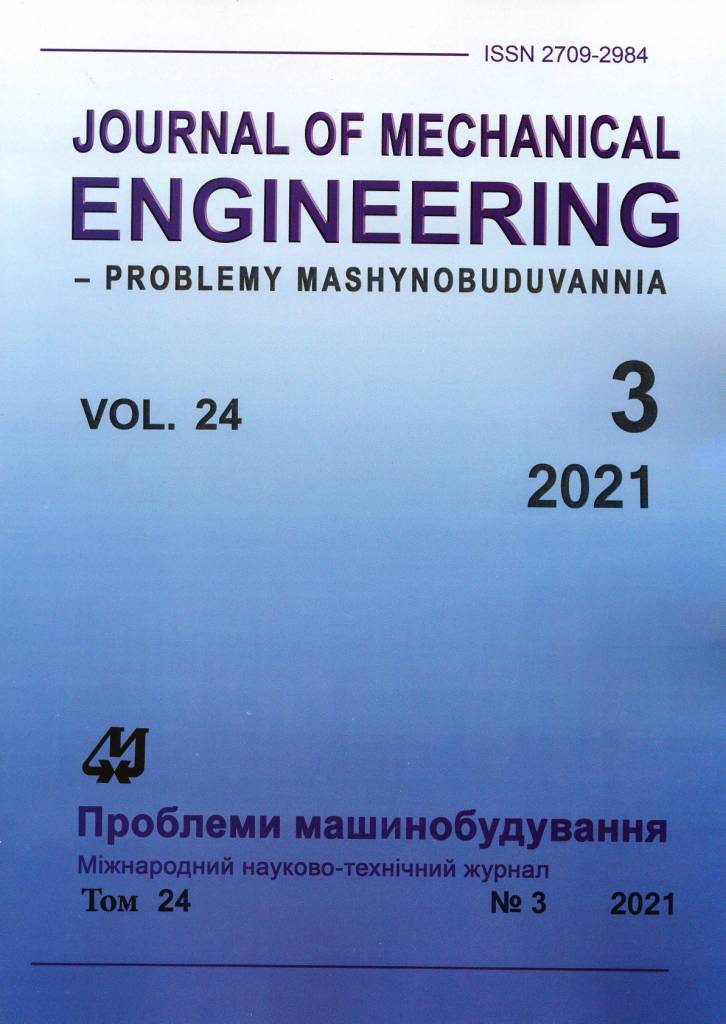Математичне та комп’ютерне моделювання гвинтів з шестигранною голівкою для реалізації на 3D-принтері
Анотація
У даній статті на основі теорії R-функцій розроблено методики і побудовано рівняння для моделювання гвинтів із шестигранною головкою та шліцами типу Bristol, Pentalobe, Polydrive та ін., які застосовуються як в персональних комп'ютерах, так і в іншому обладнанні високого класу, для їхнього подальшого друку на 3D-принтері. Шліц типу Bristol має чотири або шість радіальних променів-заглиблень. Перевагою конструкції даного шліца є правильний перпендикулярний, а не дотичний вектор прикладання сили при обертанні шліца інструментом, що мінімізує небезпеку його зриву. Через це шліц Bristol використовується в гвинтах з м'яких металів. Порівняно з внутрішнім шестигранником шліц Bristol допускає помітно більший крутний момент, лише трохи більше такого, ніж у шліцах Torx. Цей тип шліців використовується в авіації, телекомунікаційному обладнанні високого класу, камерах, повітряних гальмах, сільгосптехніці, астрономічному обладнанні та зарубіжній військовій техніці. Різновиди зі штифтом в центрі зустрічаються в ігрових приставках, для запобігання використанню плоскої шліцьової викрутки як імпровізованого ключа. Шліц Pentalobe – п’ятипроменевий шліц, розроблений компанією Apple і використовуваний нею в своїх продуктах для обмеження несанкціонованого розбирання. Вперше використаний в середині 2009 року для кріплення акумулятора MacBook Pro. Мініатюрна версія використовувалася в iPhone 4 і подальших моделях, в MacBook Air (в моделях з кінця 2010 р.), в MacBook Pro з екранами Retina. Шліц Polydrive – зіркоподібний шліц з заокругленими вершинами зірки. Застосовується в автомобільній промисловості для задач, що вимагають високого моменту затягування. Шліц Torq-set – хрестоподібний шліц для кріплення з високим моментом затяжки. Пази трохи зміщені і не перетинаються в одній точці. Кріплення з даним видом шліца використовується у військовій авіації, наприклад в E-3, P-3, F-16, Airbus, Embraer і Bombardier Inc. Компанія Phillips Screw Company володіє торговою маркою і виробляє кріплення з даним видом шліца. Стандартами, що описують конструкцію шліца, є National Aerospace Standard NASM 33781 і NASM 14191 для ребристої версії. Отримані рівняння для поверхонь гвинтів було перевірено в ході моделювання останніх перед друком на 3D-принтері. Технологія 3D-друку дозволяє знизити собівартість і трудомісткість виготовлення продукції, в тому числі гвинтів зі складними шліцами. Аналітичний запис проектованих об'єктів дає можливість використовувати буквені геометричні параметри, складні суперпозиції функцій, що, в свою чергу, дозволяє оперативно змінювати їх конструктивні елементи. Властивість позитивності побудованих функцій у внутрішніх точках об'єкта є дуже зручною для реалізації 3D-друку.
##submission.downloads##
Опубліковано
Номер
Розділ
Ліцензія
Авторське право (c) 2021 Т. И. Шейко, К. В. Максименко-Шейко

Ця робота ліцензується відповідно до Creative Commons Attribution-NoDerivatives 4.0 International License.
Автори, які публікуються в цьому журналі, погоджуються з наступними умовами:
- Автори залишають за собою право на авторство своєї роботи і передають журналу право першої публікації цієї роботи на умовах ліцензійного договору (угоди).
- Автори мають право самостійно укладати додаткові договори (угоди) з неексклюзивного поширення роботи в тому вигляді, в якому вона була опублікована цим журналом (наприклад, розміщувати роботу в електронному сховищі установи або публікувати в складі монографії), за умови збереження посилання на першу публікацію роботи в цьому журналі.
- Політика журналу дозволяє розміщення авторами в мережі Інтернет (наприклад, у сховищах установи або на персональних веб-сайтах) рукопису роботи як до подачі цього рукопису в редакцію, так і під час її редакційної обробки, оскільки це сприяє виникненню продуктивної наукової дискусії і позитивно позначається на оперативності та динаміці цитування опублікованої роботи (див. The Effect of Open Access).

